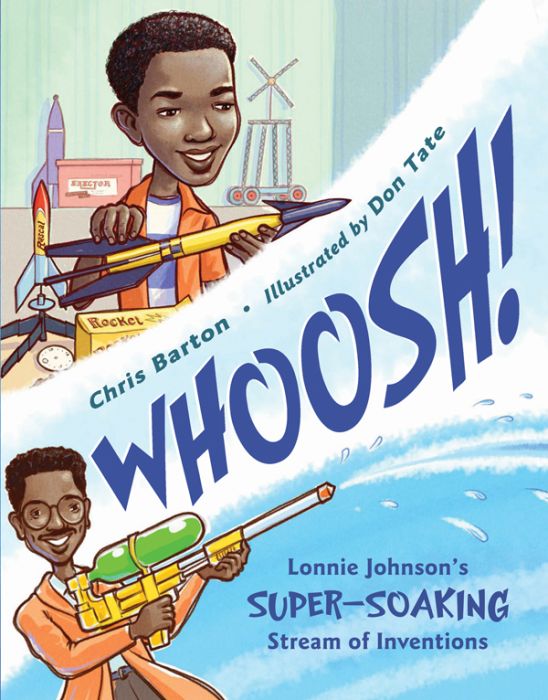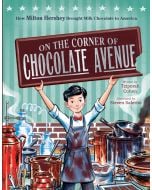
Whoosh!: Lonnie Johnson’s Super-Soaking Stream of Inventions
By Chris Barton
Illustrators
Illustrated by Don Tate
Edition
2018 Beehive Book Award Winner, Informational
ALA Notable Books for Children Nominee–Summer 2016, Nonfiction
Kirkus Reviews Best Books of 2016, Picture Books
New York Public Library 2016 Best Books for Kids, Picture Books
NSTA Outstanding Science Trade Books 2017
NSTA Best STEM Books for Students K–12: 2017
2017 Cook Prize Finalist
CBC Notable Social Studies Trade Books for Young People 2017, K–2
The Nonfiction Detectives, 2016 Best Nonfiction Books for Children
CSMCL Best Multicultural Books of 2016
ILA Children’s Choices 2017 Reading List
By Chris Barton
Hardcover edition
Publisher Penguin Imprint Charlesbridge ISBN9781580892971
Awards and Honors 2019 Beverly Cleary Children's Choice Award Winner2018 Beehive Book Award Winner, Informational
ALA Notable Books for Children Nominee–Summer 2016, Nonfiction
Kirkus Reviews Best Books of 2016, Picture Books
New York Public Library 2016 Best Books for Kids, Picture Books
NSTA Outstanding Science Trade Books 2017
NSTA Best STEM Books for Students K–12: 2017
2017 Cook Prize Finalist
CBC Notable Social Studies Trade Books for Young People 2017, K–2
The Nonfiction Detectives, 2016 Best Nonfiction Books for Children
CSMCL Best Multicultural Books of 2016
ILA Children’s Choices 2017 Reading List
Whoosh!: Lonnie Johnson’s Super-Soaking Stream of Inventions
 12
12
Out of stock
SKU
9781580892971J
Lonnie Johnson was testing an invention idea when he discovered a pump and nozzle combination that “would make a great water gun.” But for a long time, toy companies disagreed. Author’s note. Full-color digital illustrations.
|
Standard MARC Records Cover Art |
Biography Elementary Plus (Grades 1-4)
Biography Elementary Plus
Biography Elementary Plus (Grades 1-4)
For Grades 1-4
This 14 book collections offers beginning readers fascinating biographies and compelling personal stories that provide a view into history or perspective on the issues of our times.
14 books per Year
$282.52 per Year
Interests
Biographies, Nonfiction, Science/STEAM





